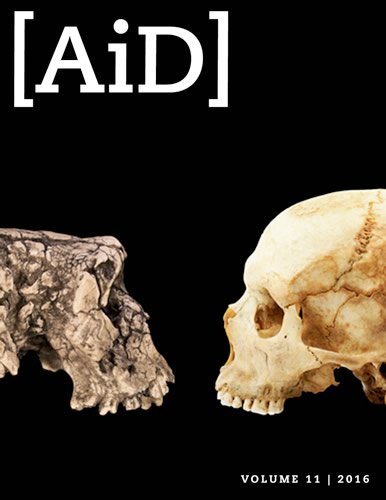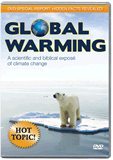
Global Climate Models Are Improving, But Are Not Yet Useful
Abstract
Climate change is potentially a significant issue for all the inhabitants of the earth. If we are truly facing dramatic climate change, all of us will be affected and some action on our part may be prudent, particularly if the change in the climate is caused by human activities.
Are We Currently Experiencing Dramatic Climate Change?
Based on historical evidence and common sense, it seems clear that the global temperature has been rising since the Little Ice Age about 400 years ago. A concerted effort to directly measure the temperature of the earth began in about 1880. The data gathered from the land-based measuring devices over the last 136 years indicate that the earth’s temperature has risen about 1.3°F. There is some uncertainty in these data due to changes in the surroundings of these measuring devices and their distribution over the surface of the earth, but clearly the temperature has risen in the past century.1 Nonetheless, a rate of change of around 0.01°F per year does not seem like a dramatic rate of change.
Are We Headed into Unchartered Territory in Terms of the Global Temperature?
Estimates of global temperature further back in time are much less certain than the temperature data for the last century. Nevertheless, many scientists believe that over the history of the earth, the global temperature and the CO2 levels have both been dramatically higher than the present levels.2 So, in that sense, we are not in uncharted territory, if those rough estimates are reasonably accurate.
These scientific models are based on proxy data, such as tree ring or ice core data, not actual temperature measurements.
More recent historical observations indicate that a period from about AD 950–1250 was significantly warmer than the Little Ice Age, particularly in the North Atlantic.3 This has been called the Medieval Warm Period (MWP). There is significant disagreement as to which period was warmer—the MWP or the present. The historical evidence seems to indicate that the MWP was a little warmer, particularly in the northern hemisphere, but many of the scientific models produced by the experts predict that the current period is warmer. These scientific models are based on proxy data, such as tree ring or ice core data, not actual temperature measurements. These estimates of the temperatures before 1880 are based on rough correlations between the proxy and temperature.
One of those scientific models resulted in the now infamous “hockey stick” diagram by Michael Mann.4 The validity of this diagram is the subject of some controversy5 and a lawsuit. There is no way to settle this debate since we cannot know for sure what the average global temperature was in the MWP. It seems reasonable to conclude that the temperature in the northern hemisphere during the MWP was in the neighborhood of the current temperature in the northern hemisphere and likely not far different from the current average global temperature.
Why Is the Level of Concern over Global Warming so High among Some Experts Given the Fairly Benign Temperature Measurements That We Have?
Climate model predictions are the source of a majority of the concern. Almost all of the climate models predict a significant increase in the global temperature in the future, and they include the possibility of a dramatic increase.
One of the important factors in these models is what climate scientists call sensitivity. Sensitivity is a measure of how the global temperature will adjust to a given change in the energy absorbed from the sun or lost to space. Lately, sensitivity has been more narrowly defined as the temperature rise that will result from a doubling of the CO2 concentration in the atmosphere. This includes the direct effect of the warming caused by CO2 and the further adjustment the climate will make to this increased temperature. It is widely agreed that the direct temperature change resulting from a doubling of the CO2 is 1°C, but there is significant disagreement as to the sensitivity. The total change (sensitivity) in climate models is estimated to be around 3.2°C ±1.5°C.6 This high sensitivity has been derived from the small amount of fairly recent temperature data, less reliable data from the distant past, and the climate models themselves. The high variability (±1.5°C) is due to the poor understanding of some of the major climate factors, particularly clouds and aerosols.
There has been a pause in the global temperature rise which was unexpected by the experts.
For the last few years, the global temperature measurements have been on the low end of the range for climate model predictions, and now the observed temperature is clearly lower than the predictions. There has been a pause in the global temperature rise which was unexpected by the experts. Based on my experience with mathematical models for chemical processes, it is easy to see that matching mathematical models to processes as complicated as the global climate would be very difficult. To make an accurate model, one would need a tremendous amount of data, preferably from many different climatic conditions, and a fundamental understanding of all the major processes that are involved. At this point, we have neither. As we get more and better data and improve our understanding of clouds, aerosols, and albedo (reflectivity of the earth and the clouds), the models will improve.
The good news is that the improvement process is already underway. Some are beginning to see that the sensitivities in the models are too high. The latest report from the IPCC showed a lowering of the lower end of the range of sensitivity. The predicted range is now 1.5–4.5°C, whereas the previous estimate was 2.0–4.5°C—a small but significant move. Gervais also recently published a plot of data from models published in the last 15 years, showing that the sensitivities used in those models have steadily decreased over that time frame.7 So the scientific process is working, and scientists are adjusting their models to better fit the observed temperatures.
Perhaps the original models had too high a sensitivity based on a belief that today’s temperatures are higher than those a millennium ago and that burning fossil fuels was the cause. If that were true, modelers could have compensated for a high sensitivity with too large a negative factor for sulfate aerosols. In fact, there is some recent published data that indicates the factor used for aerosols was actually too high.8 So lowering both of these factors may give us improved models in the future. In addition, Gervais reported a 60-year cycle in sea level changes that could help explain some of the temperature changes in the past 100 years.9 Addition of this factor to the models could improve the accuracy of the models.
Given the Uncertainty in the Models, What Is the Prudent Course of Action?
A number of experts in the field are calling for immediate, drastic action. They believe that the mere possibility of “severe and irreversible harm”10 is enough to warrant immediate, costly compensating actions. They are convinced human actions are to blame for global warming and a litany of other problems.
“Though various natural factors can influence Earth’s climate, only [emphasis mine] the increase in greenhouse gas concentrations linked to human activity, principally the burning of fossil fuels, can explain recent patterns of global warming. Other changes in Earth’s climate, such as shifting precipitation patterns, worsening drought in many locations, increasingly severe heat waves, and more intense Atlantic hurricanes, are also likely repercussions of human impact.“11
In my 35 years in research and development, I have sought to find what is true by experimentation and thorough data analysis and to propose what course of action should be taken. What is proposed here seems neither a reasonable analysis of the data nor a prudent course of action. The analysis does not appear even-handed. In the rare cases where the experts consider mitigating factors in this complex problem, the mitigating factors were quickly dismissed as unimportant.12 The claim that the harm to the environment could be irreversible seems particularly exaggerated. Systems that have exhibited stable performance as the earth’s climate has for the past 2,000 years are likely to be controlled by negative feedback mechanisms, like your thermostat, and unlikely to have a tipping point.13 Besides, if temperature and CO2 level were once higher long ago on the earth, it must be possible for the temperature to decline, since we are supposedly cooler now than ancient times by a wide margin.
These highly complex, integrated systems that are necessary for life are powerful evidences of design.
It is important to remember that water and carbon dioxide are required for life on earth. Water is necessary to dissolve the chemicals of life and to warm the earth by the greenhouse effect. CO2 is required for plant life and, therefore, for animal life, and it supplements water’s greenhouse effect.14 Water is the basis for our hydrologic cycle and forms clouds that reflect the sun’s energy away from the earth. Carbon dioxide is plant food. A significant portion of the green part of the earth has become greener over the past 35 years, and 70% of that has been attributed to an increase in atmospheric CO2.15 These highly complex, integrated systems that are necessary for life are powerful evidences of design.
Conclusion
My belief is that an all-powerful Designer created the universe in a way that changes in temperature and CO2 levels on earth are possible, but within a range that will allow life to continue. The temperature of the earth is not as tightly controlled as your body’s temperature, but the recent data are consistent with it being controlled.
With further study and good data analysis, the mathematical models should improve to the point of being useful. In the future, we should be better able to assess whether changes in the earth’s temperature are a real concern and whether we can significantly affect the temperature.
No matter the nature of the crisis, I believe the Lord has already instructed us how to respond.
He has told you, O man, what is good; And what does the Lord require of you But to do justice, to love kindness, And to walk humbly with your God? (Micah 6:8 NASB)
We can do justice by doing our part in maintaining a healthy environment, and by being good stewards of the resources we have been given. We can be kind by helping those less fortunate than ourselves deal with climate changes and by educating them in how the climate works. Finally, we can praise the Lord for His glorious creation and walk in His footsteps.
Footnotes
- Alan White, “Should We Be Concerned About Climate Change?” in The New Answers Book 4, Ken Ham, ed. (Green Forest, AR: Master Books, 2014), 187.
- J. Veizer, “Evidence for Decoupling of Atmospheric CO2 and Global Climate During the Phanerozoic,” Chemical Geology 161 (1999): 59. Dana L. Royer, “CO2 Forced Climate Thresholds During the Phanerozoic,” Geochimica et Cosmochimica Acta 70, no. 23 (2006): 5665–75.
- Alan White, “The Globe Is Warming, But It’s Not Your Fault,” Answers in Depth 10 (2015), https://answersingenesis.org/environmental-science/climate-change/globe-is-warming-but-its-not-your-fault/.
- Michael E. Mann, Raymond S. Bradley, and Malcolm K. Hughes, "Northern Hemisphere Temperatures during the Past Millennium: Inferences, Uncertainties, and Limitations," Geophysical Research Letters 26, no. 6 (1999): 759–762.
- Ross McKitrick, “The Hockey Stick: A Retrospective,”, Chapter 14 in Climate Change: The Facts, edited by Alan Moran (Stockade Books, New Hampshire, 2015).
- Patrick J. Michaels and Paul C. Knappenberger, “Chapter 15” in Lukewarming: The New Climate Science That Changes Everything (Cato Institute, 2015).
- Francois Gevais, “Anthropogenic CO2 Warming Challenged by 60-year Cycle,” Earth-Science Reviews 155 (2016): 129–135, http://www.kin152.org/climatologie/challenge.pdf.
- Bjorn Stevens, “Rethinking the Lower Bound on Aerosol Radiative Forcing,” Journal of Climate 28 (2015): 4794–4819.
- Francois Gevais, “Anthropogenic CO2 Warming Challenged by 60-year Cycle.”
- Michael Mann and Lee Kump, “Dire Predictions: Understanding Climate Change,” Weatherwise, second ed., (DK Publishing, 2015), 210.
- Ibid., 16.
- See Mann and Kump, “Dire Predictions;” and Robert Henson, The Thinking Person’s Guide To Climate Change (Boston: The American Meteorological Society, 2014).
- White, “Should We Be Concerned About Climate Change?”
- Water absorbs a significant portion of the infrared radiation emitted from the earth’s surface. Carbon dioxide absorbs a little more of the infrared because its absorption spectrum is different. Antero Ollila, “The Potency of Carbon Dioxide (CO2) as a Greenhouse Gas,” Development in Earth Science 2, no. 20 (2014): 1–10, https://www.researchgate.net/publication/274956207_The_
potency_ .of_ carbon_ dioxide_CO2_ as_a_ greenhouse_ gas - Z. Zhu, et al., “Greening of the Earth and Its Drivers,” Nature Climate Change 6, no. 8 (April 25, 2016): doi:10.1038/nclimate3004.
Recommended Resources

Answers in Genesis is an apologetics ministry, dedicated to helping Christians defend their faith and proclaim the good news of Jesus Christ.
- Customer Service 800.778.3390
- Available Monday–Friday | 9 AM–5 PM ET
- © 2025 Answers in Genesis




